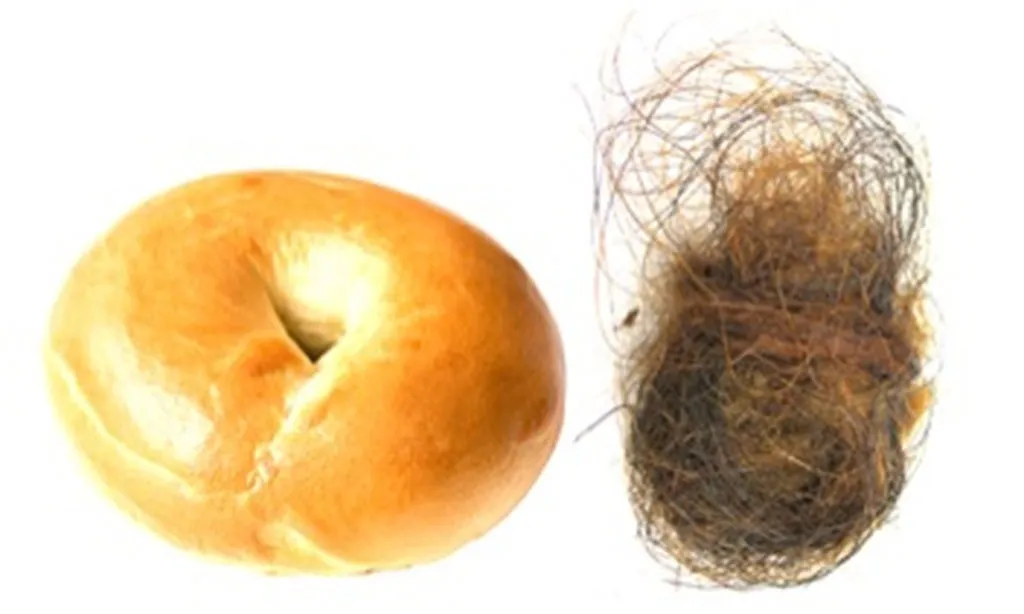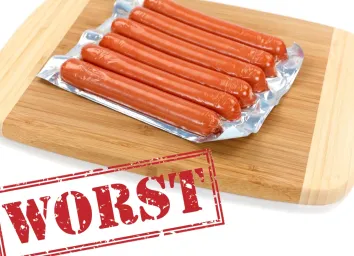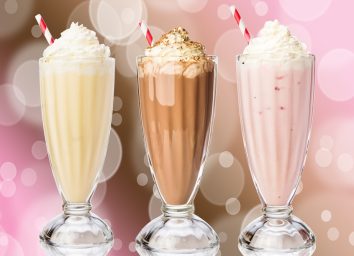5 Grossest Additives You’re Eating

5. L. Cysteine
Also known as: Human hair, duck feathers
Found in: Bagels, Bread Products
Here’s what it takes to make a plain bagel: flour, water, salt, yeast. Unless you’re a popular bagel chain. Then you throw in some human hair and duck feathers. Many processed bagels and bread products contain the enzyme L. Cysteine, a “dough conditioner” from natural sources — namely human hair and poultry feathers. Einstein Bros. and Dunkin’ Donuts have both confirmed using L. Cysteine in all of their bagels. Hair and feathers also make an appearance in the garlic bread at Pizza Hut, in Tombstone pizza, and in Mickey D’s honey wheat rolls, cinnamon rolls, and apple pies.
EAT THIS Lender’s Bagels
NOT THAT! Einstein Bros Bagels
4. Cellulose
Also known as: Wood Chips
Found in: Shredded Cheese
If one of the ingredients in your cheese were ground wood chips, would you consider it “organic”? The earnest folks who work at Horizon Organic do. On the label of their finely shredded cheddar cheese is the word “cellulose,” which means processed wood chips. You’ll find cellulose in most ready-grated cheeses, as it stops the strands from sticking together. It’s often soaked in sodium hydroxide (chlorine) and categorized as a synthetic ingredient, but the FDA, apparently pining for the timber industry, allows its use in foods labeled “natural” and “organic.” Bottom line: Shredded cheese may be convenient, but you don’t need to be eating wood pulp. Buy a block instead, and grate your own. (And make sure you’re staying away from these sleazy cheeses that boast their own scary additives.)
EAT THIS Organic Valley Grassmilk Raw Sharp Cheddar
NOT THAT! Horizon Organic Cheddar Cheese, Finely Shredded
3. Propylene Glycol
Also known as: Antifreeze
Found in: Light Ice Cream
How do you make frozen ice cream more scoopable? Douse it in antifreeze! Sounds like a bogus suggestion, but the folks at Skinny Cow, Breyers Fat-free, and Carb Smart (among other brands) use antifreeze, otherwise known as propylene glycol, in their “light” ice creams to make them easier to scoop. BEAT IT! Real ice cream is a high-fat indulgence made from milk, sugar, cream, and sometimes eggs. Your best bet is to keep it real; the simpler the ingredient list, the better. Plus, food you make at home just tastes better. Try our irresistible recipes for spicy buffalo wings, pancakes, and more that help you lose weight without sacrificing flavor.
EAT THIS! Haagen-Dazs Vanilla Ice Cream
NOT THAT! Skinny Cow Ice Cream Caramel Cone Cup
2. Sodium Tripolyphosphate
We know it as: Pesticide
Found in: Frozen Fish
Something fishy is going down in the frozen-food aisle at US supermarkets: Spoiled and expired fish are made to look fresh with a chemical additive that causes them to retain moisture. It’s called Sodium Tripolyphosphate (STPP) — a suspected neurotoxin, registered pesticide, and air contaminant that the FDA considers “generally recognized as safe” to eat. Europe, Canada, and other countries have limits on the total level of STPP allowed in seafood (.1 % to .5%), but the US has no such regulations. Companies aren’t required to label this additive, but some packaged products do. When in doubt, stay dry. Seafood labeled as “dry” have not been treated with STPP; seafood marked as “wet” has been soaked in it.
EAT THIS Natural Sea Premium Cod Fish Sticks
NOT THAT! Gorton’s Crunchy Breaded Fish Fillets
1. Arsenic
Also known as: Arsenic
Found in: Grape Juice, Apple Juice
Surely you wouldn’t intentionally buy the kids a fruit juice with arsenic in it?! Researchers recently found that people who regularly drink apple juice have, on average, 19% higher levels of arsenic in their urine than those who do not; grape juice drinkers have 20% higher levels. Inorganic arsenic is a known carcinogen. The FDA recently set a standard of no more than 10 ppb (parts per billion) in juice, but a study by Consumer Reports found that many commercial juices reached or exceeded that level, including samples of Apple & Eve, Great Value, Mott’s, Walgreens and Welch’s. It’s likely that inorganic arsenic makes its way into fruit juice via arsenic-tainted soil in U.S. orchards (the result of pesticides used decades ago) and from juice concentrate sourced from China. Limit your intake of these two juices to no more than 8 to 12 ounces a day; no more than 4 to 6 ounces for kids up to 6. Or enjoy OJ instead.
DRINK THIS Uncle Matt’s Orange Juice with Pulp
NOT THAT! Welch’s 100% Grape Juice








